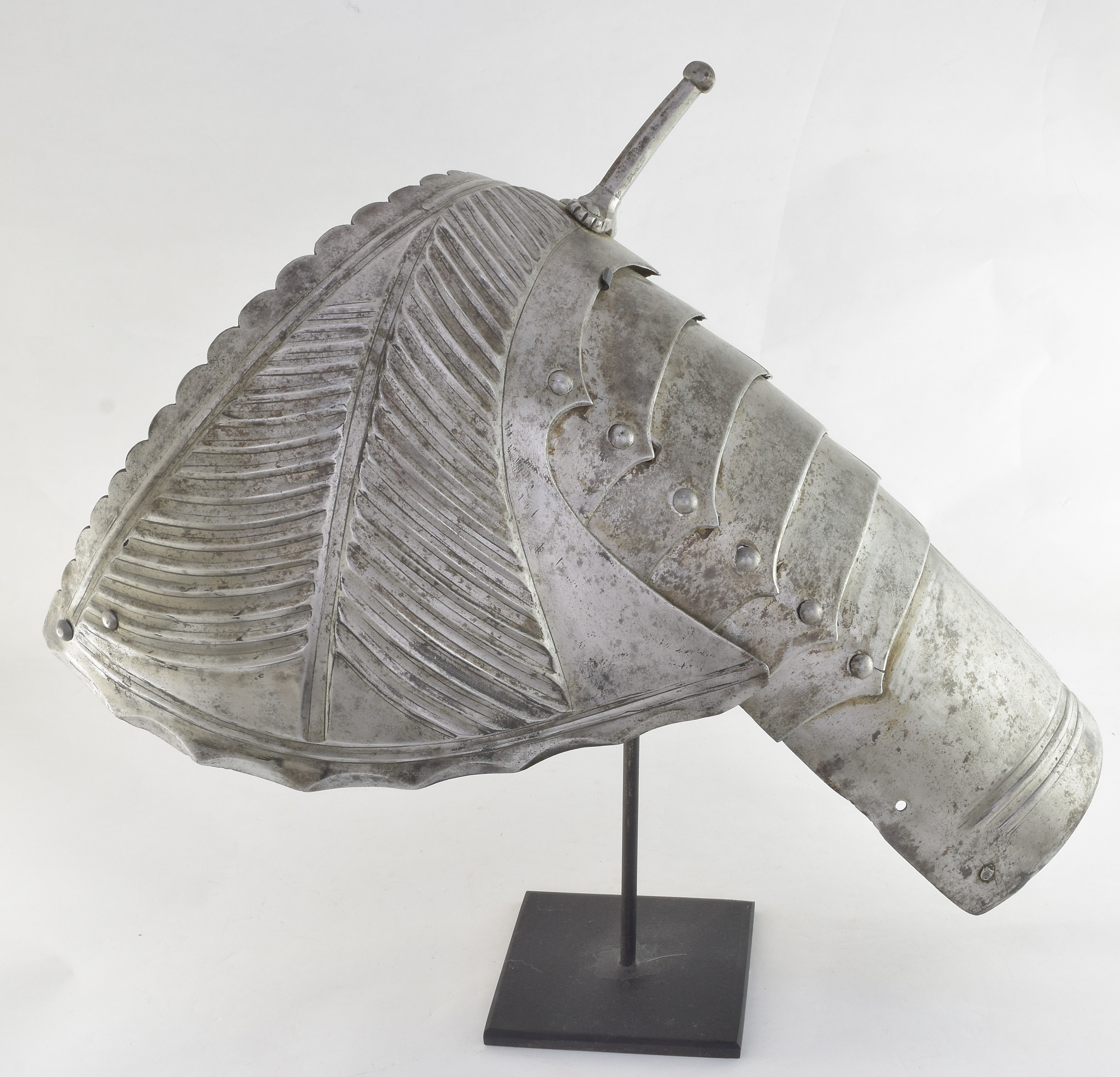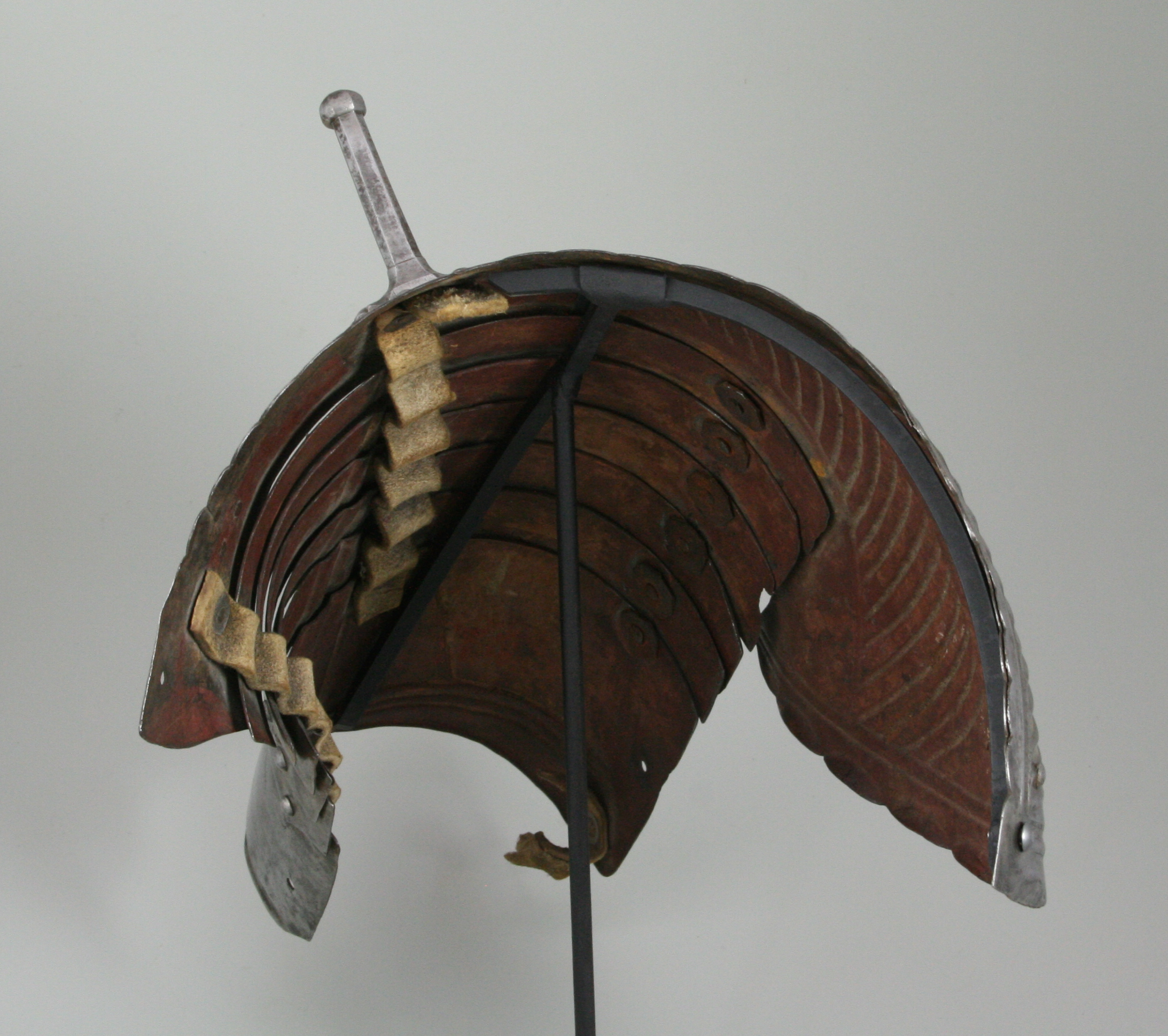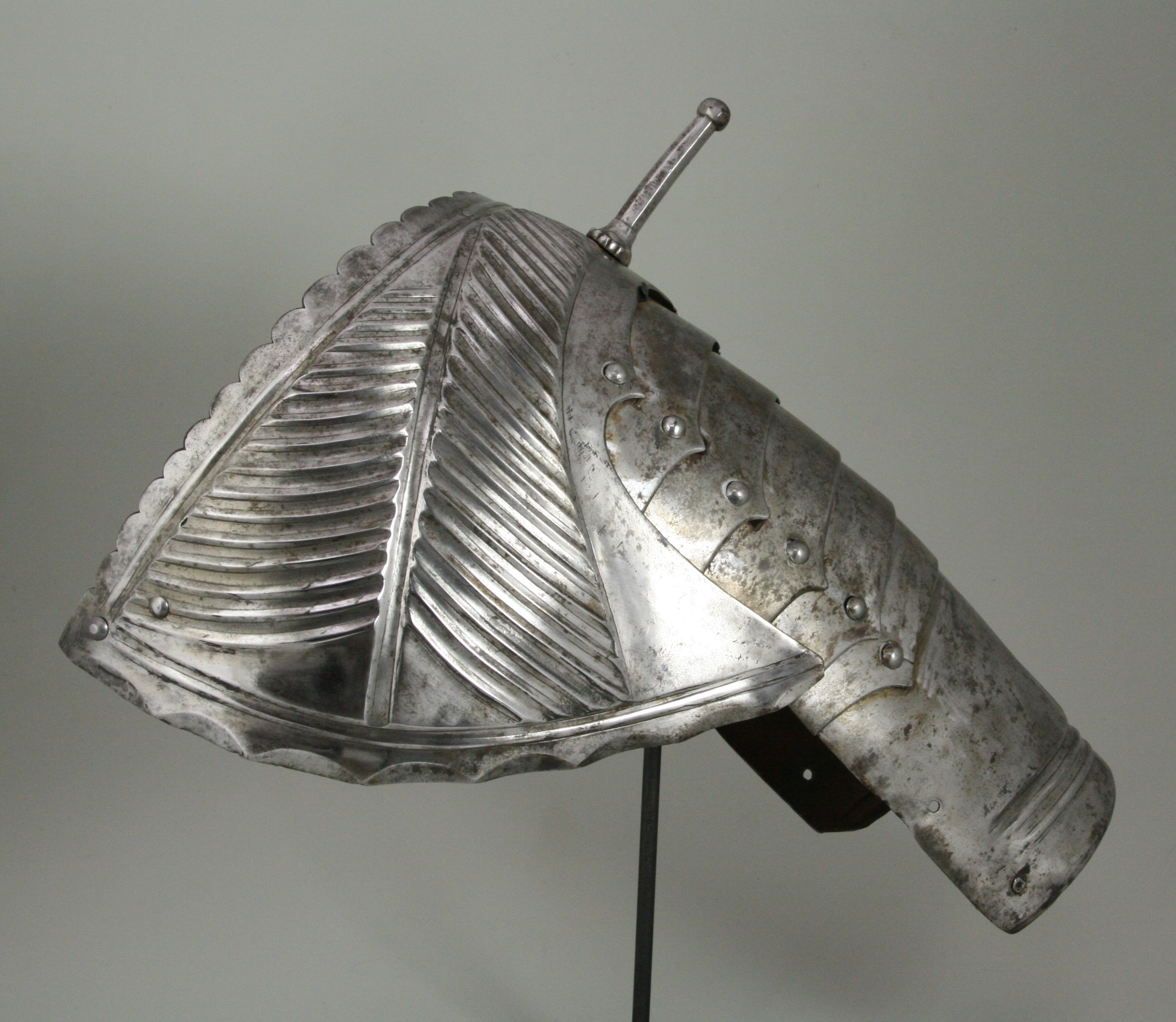




















Pauldron 1500
For the right shoulder. Fluted at the center of the arm and heavily fluted in the back of the main plate. Flutes asymmetric with engraved lines on both sides accenting the form of the flute. Upper edge of the main plate filed to rounded tabs. The rear edge of the main plate with bent down cusps. Center of the main plate with a sculpted peg to secure the lance when held over the shoulder. Originally part of a Stech armour of very high quality. A pair of pauldrons of similar form are illustrated on plate 73 of Katalog Der Leibrustkammer I teil. They are dated 1497. That pair are somewhat more plain. There are several other pairs of Stech pauldrons in the KHM. The most plain is on S VII - Stechzeug made in Innsbruck and dated 1483/4. Other similar pauldrons include WA 24 and S XVI. This one is purportedy from the collection at Schloss Grafenegg. The plates have a very nice form, overall tapering to the arm and flaring out in the front where it would overlap the breastplate and aggressively curved in the back where it would fit over the shoulder blades.
Measurements: Thickness varies mostly between .075 and .050 in. The thickness is a little random, like most authentic pieces, but the front of the main plate and several of the lower plates is the thickest part of the piece. The thickest spot on the main plate is just in front of the post. Some portions of the 3rd and 4th plates reach .080 in. The terminal plate is more generally around .050 in. There is some odd variability, but the general pattern places the thickest material in the front and side in areas which would not be covered by other plates.
If you have any questions, please send them to Wade Allen
This site last updated Mon Oct 17 11:33:09 EDT 2022